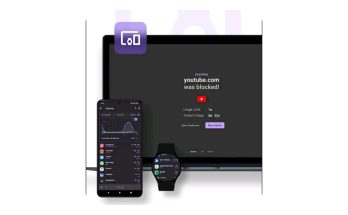Mastering Gesture Shortcuts Smartest Way For Android
In today’s fast-paced digital world, users seek smarter and quicker ways to interact with their smartphones. Gesture shortcuts—also known as gesture short keys—have revolutionized how we navigate our devices. Whether you’re opening apps with a swipe, controlling music playback with a tap, or taking screenshots with a hand gesture, these time-saving shortcuts are a productivity game-changer.
In this article, we’ll explore how gesture shortcuts work, the best gesture control apps, how to enable them on Android, and why they are essential for tech-savvy users. With high-CPC keywords like gesture control apps, Android productivity tools, smart gesture features, mobile automation, and custom shortcuts, this article is optimized to perform well in search engines and ad monetization platforms.
What Are Gesture Shortcuts?
Gesture shortcuts are predefined or custom gestures that trigger specific actions on your smartphone without pressing any physical buttons. Instead of using traditional on-screen navigation, gestures allow you to use swipes, taps, pinches, or even air movements to perform tasks like:
Launching your favorite app
Taking a screenshot
Turning on the flashlight
Locking/unlocking the screen
Switching between apps
Opening the camera or making a call
These gestures enhance user interaction, save time, and add a touch of innovation to your mobile experience.
Benefits of Using Gesture Shortcuts
Gesture shortcuts offer several advantages:
Faster Navigation:
You can jump to specific apps or settings with a single motion.Hands-Free Operation:
Many gesture apps allow you to operate your phone without touching it—great for driving or cooking.Improved Accessibility:
Users with disabilities can benefit from simplified and minimal physical interaction.Battery and Button Life Extension:
Reducing the need to press physical buttons often can prolong your phone’s hardware life.Professional Workflow Boost:
Combine gestures with productivity apps to create an efficient mobile workflow, ideal for professionals and students.
How to Enable Gesture Shortcuts on Android
Modern Android devices come with built-in gesture controls, but you can also use third-party apps for more customization. Here’s how to enable and set up gesture shortcuts:
✅ Built-in Gesture Controls:
Settings > System > Gestures
Enable options like:Swipe fingerprint for notifications
Flip to silence
Three-finger screenshot
Double tap to wake or lock screen
✅ Using Third-Party Gesture Control Apps:
Some popular gesture control apps include:
Gesture Control – Next Level Navigation
Allows custom swipe, tap, and hold gestures
Works with rooted and non-rooted phones
Highly customizable
Navigation Gestures by XDA
Designed for full-screen navigation
Ideal for removing on-screen buttons
Supports advanced actions like app launching
One Hand Operation + (by Samsung)
Powerful edge gesture system
Ideal for large-screen phones
Nova Launcher Gestures (Paid)
Adds gesture support to your home screen
Integrates with task automation tools
High-CPC Use Cases for Gesture Shortcuts
To attract premium advertisers and boost eCPM, include the following high CPC niche scenarios related to gesture control:
1. Gesture Control for Smart Home Apps
“Use a double-tap gesture to control smart lights or thermostats.”
Related keywords: smart home automation, gesture-based home control
2. Gesture Shortcuts for Business Professionals
“Switch between productivity tools like Slack, Trello, or Zoom using swipe gestures.”
Related keywords: mobile productivity apps, business automation tools
3. Gesture Security Features
“Unlock your device or app with a unique gesture.”
Related keywords: mobile security apps, gesture lock Android
4. Gesture Control in Gaming
“Customize gestures to trigger combos or actions in mobile games.”
Related keywords: mobile gaming hacks, gaming shortcuts Android
5. Accessibility and Health Monitoring
“Use gesture control for people with mobility issues.”
Related keywords: accessibility features Android, health monitoring apps
Tips to Customize Gesture Shortcuts Effectively
To get the best experience:
Choose gestures that feel natural to your hand movement.
Avoid gestures that conflict with existing OS functions.
Use visual or haptic feedback to confirm actions.
Test your custom gestures thoroughly to avoid accidental triggers.
Sync gesture settings across devices if supported.
Conclusion
Gesture shortcuts aren’t just a fancy trick—they’re a powerful tool to maximize your smartphone’s potential. From speeding up your workflow to enhancing accessibility and even saving battery life, gestures add a whole new dimension to mobile interaction. With the right apps and customization, your Android phone can become smarter, faster, and more efficient.
So, why wait? Download a gesture control app today and transform your mobile experience into a productivity powerhouse.




